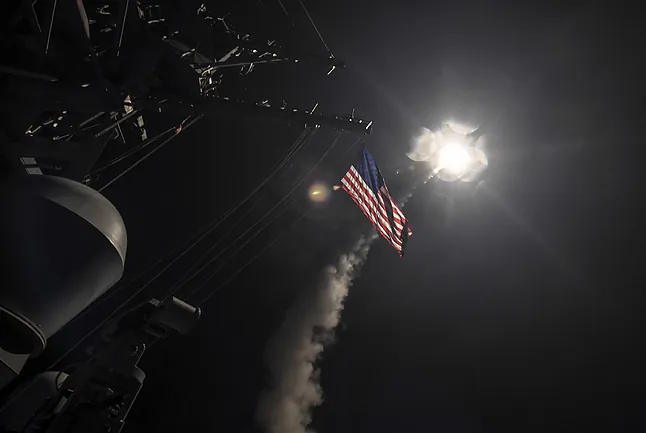For the indigenous peoples of North America, the Tomahawk (a small axe with a wooden handle and a sharp iron head) had a strong symbolic and ceremonial value: in peace treaties, the Tomahawk was "buried" (origin of the English expression bury the hatchet), while during times of war it was "unearthed".
Bad news for Ukraine, such as the fact that the US has stopped sending weapons to Kiev altruistically, could, on the other hand, mean that its army could have access to better and more capable attack systems, as the Trump Administration's mantra now is to sell them to Europe and have Europe deliver them to Ukraine to make a profit. If it had been up to Washington, it would never have given away certain weaponry, but it's a different story to put it on the market and have it bought.
After having demanded (and obtained) the shipment of NATO-caliber artillery cannons, tanks, thousands of armored troop carriers, HIMARS launchers, Storm Shadow missiles, and F16 fighter jets (all of these deliveries were red lines for Russia and yet they were made), now comes an even bolder request: Volodymyr Zelenski met with Trump after his speech at the UN last Thursday. He received something from the US president, his personal permission to attack targets in deep Russia. The Ukrainian leader took the opportunity to ask for the weapon with which to do so: launchers and Tomahawk missiles.
The US president not only did not refuse to listen, but promised to study it and give Zelenski a quick response. Vice President JD Vance himself later admitted that the Pentagon is currently studying this sales operation, although the final decision will be made by the US president. After that meeting, Zelenski said that the exchange was the "most fruitful with Trump" since they have known each other, considering that some of their encounters ended in diplomatic disaster.
What has changed for the White House to consider something that it would have dismissed not long ago and that could mean a total change on the battlefield? Some military analysts believe that the US president is frustratedwith Vladimir Putin's games in peace talks. Last week, in surprising statements, Trump stated that Russia was "a paper tiger" that has not achieved anything after almost four years of war. JD Vance essentially echoed the same sentiment this past weekend. Therefore, it seems that both are considering a change in strategy with Putin.
Why is this request important? The Tomahawk offers Ukraine capabilities that it currently lacks and could be a lever for Russia to understand that the military solution (if we can even call it a solution) is already exhausted and that negotiations need to take place. Additionally, on a political level, it could break the deadlock in the insubstantial back-and-forth between Putin and Trump, because the Russian autocrat would no longer be able to continue his flattery game with the man who, even if it's for money (and a lot of it), sells his best weapons to his enemy.
It is a long-range cruise missile designed for precision attacks against ground targets. The US uses it from ships and submarines, but ground launchers have also been developed, a perfect solution for Kiev. If Ukraine acquires it, it will have Moscow, St. Petersburg, and the main Russian military bases and industries within range.
It can follow low-altitude routes and evade radars and defenses, has a maximum range of 2,500 kilometers, and a high-power conventional warhead, allowing it to strike Russian main bases, critical infrastructure at great depths with precision of a few meters, and even modern variants allow in-flight reprogramming and bidirectional communications, almost like a drone. Its main strategic effect is to surgically destroy enemy logistics far beyond the front lines.
Analysts like Justin Bronk and Jack Watling have been advocating for months that Europe and its allies strengthen their arsenal of long-range precision firepower to deter Russia and strike operational targets in depth. With this missile and those that Ukraine is capable of producing on its own, such as the Flamingo, still in pre-production, Kiev extends its reach. If it is already able to set fire to 16 out of the 38 Russian refineries with medium-sized drones, what could it do with missiles of that size? Dmitry Peskov, Kremlin spokesperson, downplayed the effects of this weapon yesterday, but at the same time expressed concern about the extent of US involvement in training Ukrainian crews or selecting targets.
